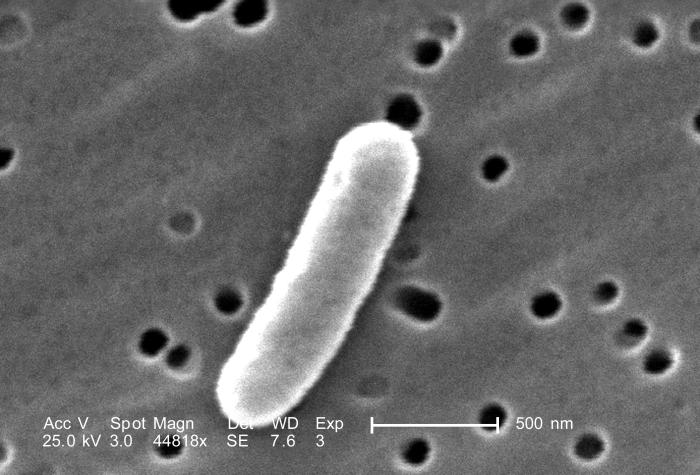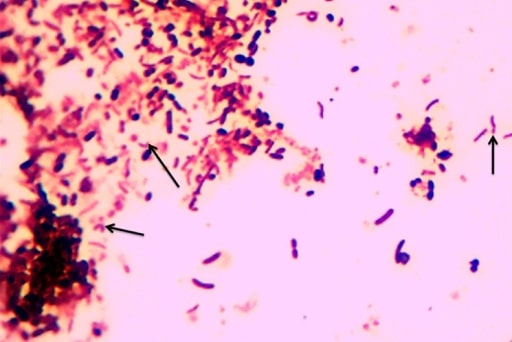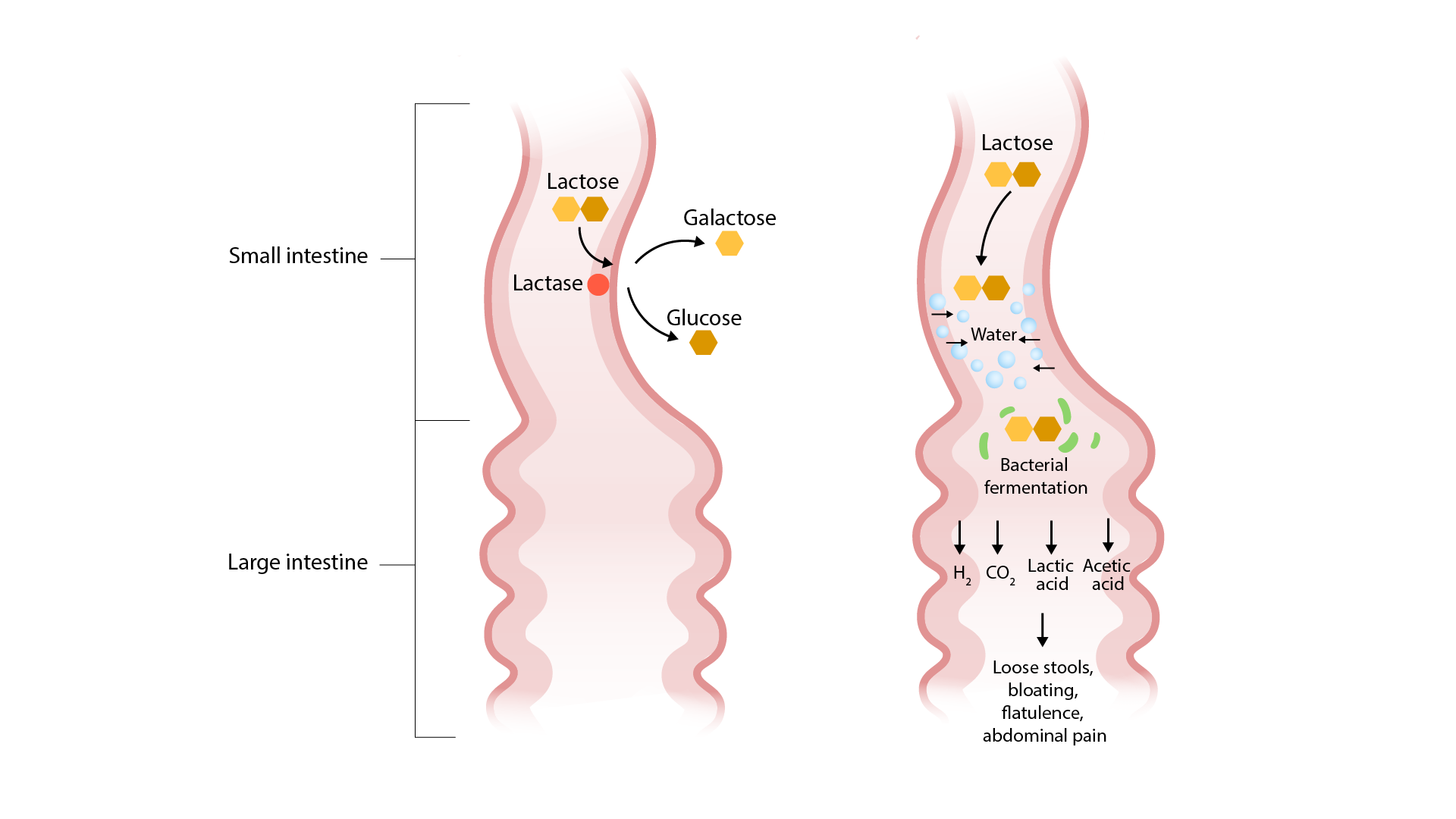Playlist
Show Playlist
Hide Playlist
Infectious Diarrhea and Food Poisoning: Definition & Epidemiology
-
Slides InfectiousDiarrhea InfectiousDiseases.pdf
-
Download Lecture Overview
00:01 In our discussion of gastrointestinal tract infections, we come to the very large topic of infectious diarrhea and food poisoning. 00:13 We would certainly define it as the acute onset of excessive bowel movements caused either directly or indirectly by microbial pathogens. 00:25 It's got a tremendous impact on the world. 00:29 It's the second leading cause of morbidity and mortality with 3 million deaths a year. 00:37 And that's more than 8,400 a day. 00:42 And unfortunately, it affects our young children in developing countries. 00:47 And the main reason for that is that they don't have a lot of fluid to start with. 00:52 And so if they start losing a lot of fluid, they lose a lot of blood volume and they can get sick in a hurry. 01:01 Diarrhea is 1000 fold higher in developing countries than in the United States. 01:08 But it still is a problem in the United States with 179 million cases a year, 17 million of which are food-borne. 01:18 About 2 million of those instances require hospitalization. 01:25 3000 deaths is a sizable amount, and most of the deaths occur among elderly persons. 01:33 In the United States, the cost of food-borne illnesses is estimated to be as high as $90 billion in medical care and lost productivity every year. 01:41 The annual incidents per 100,000 people of domestically acquired bacterial and parasitic infections in 2019 in 10 US sights is shown in this histogram. 01:52 Campylobacter leads the list followed closely by salmonella, then Shiga-toxin producing E. coli or STEC, Shigella, Cyclospora, a parasite, Yersinia, Vibrio and Listeria. 02:05 Then, as far as the causes of acute bacterial diarrhea, if you're talking about international travel, we're talking about these organisms. 02:16 E. coli, the cause of turista. 02:19 Some people call it Montezuma's revenge. 02:23 Some people call it the Green Apple Quickstep. 02:26 There are many names for it. 02:27 One of my colleagues says, travel broadens the mind and loosens the bowels. 02:35 And then it's a problem in people who work in daycare centers. 02:40 And obviously, it's a problem among food handlers. 02:44 Well, of course, diarrhea is a pretty common disorder in everybody. 02:49 Most everybody gets an occasional episode of diarrhea every year. 02:55 And we don't need medical evaluation for that. 02:59 So when does a person with diarrhea actually need to see a physician? Well, that would certainly be for profuse, watery diarrhea with hypovolemia. 03:10 In other words, the patient has such volume depletion, that when they stand up, they feel dizzy, or feel like they're going to faint. 03:19 Certainly somebody who has diarrhea along with definite fever, say greater than 38.5°C, or if they've had diarrhea that's been lasting more than 48 hours, they probably need to be evaluated. 03:34 A baby with diarrhea because they have such little blood volume anyway, need to be evaluated as do elderly folks. 03:43 And let's say a patient who has Crohn's disease or ulcerative colitis, and they often have diarrhea. 03:50 Let's say they get another episode of diarrhea. 03:53 Is it the underlying illness? Or is it some infectious disease problem, we need to know and they need to be evaluated. 04:02 Somebody with severe abdominal pain, that is not common in most benign causes of diarrhea. 04:11 And then someone who has had recent antibiotic treatment for any reason there's a concern for this organism called C. difficile, which can cause a very severe form of antibiotic-associated diarrhea, which can progress to colitis which can even progress to toxic megacolon and death. 04:32 So we need to know if that's there and that's causing the diarrhea. 04:37 And then the immunocompromised patient, the classic example would be the AIDS patient with diarrhea because they may have an unusual organism causing their diarrhea, which requires rather unusual treatment. 04:52 So more about the clinical features that we need to discern what medications the patient may be receiving. 05:01 For example, chemotherapy itself. 05:04 If you know about cancer chemotherapy, it goes after rapidly proliferating tissue. 05:11 While the GI tract has a rapid turnover rate. 05:14 So you can imagine that diarrhea is a common complication of cancer chemotherapy. 05:20 So we need to know about that kind of history. 05:24 We need to know about the sexual history. 05:27 We talked about some of the sexually transmitted diseases which can be associated with GI symptoms. 05:35 And we need to know about whether patients have pets. 05:38 There are some zoonotic infections that can be spread from pets to humans. 05:44 And we need to know whether patients are receiving any kind of medications. 05:49 Now, to figure out what the cause of the diarrhea is, it's useful to know about the onset. 05:58 So if we're talking about food poisoning, that usually comes on pretty rapidly, usually within 2-7 hours and vomiting is predominant in food poisoning. 06:12 And the classic one, perhaps the most rapid one is that caused by staphylococcus, the enterotoxins of staphylococcus comes on faster than about any form of food poisoning. 06:26 So we need to know about the recent consumption of things that might have staphylococci in them like chocolate eclairs, like mayonnaise, like chicken salad, a t picnics and things of that nature. 06:43 We need to know about the duration of symptoms. 06:47 The stool frequency and the characteristics. 06:50 Is the patient having small volume stools containing blood and mucus? That suggests an invasive pathogen. 06:58 We need to know about the presence of severe abdominal pain as we mentioned. 07:03 On physical examination, we want to look for evidence of volume depletion. 07:09 For example, decreased skin turgor, sometimes it can be pretty subtle. 07:15 And so what you want to do with a typical patient is grasp, say, a centimeter of their skin, pinch it together a little gently and see if it stays up. 07:28 If it sort of tense that would be evidence of decreased skin turgor, we need to look at the mucous membranes, are they dry? The other thing that a lot of people forget to check for is orthostatic hypotension. 07:42 Patient may come in to the emergency room and they're on a stretcher. 07:46 Well, we take their blood pressure, and it might read 120/80 on a stretcher. 07:52 But if you crank the head of the stretcher up, say 30°, you may find that the blood pressure then drops to 90/70, which is an indication of orthostatic hypotension, and rather significant volume depletion. 08:11 Obviously, we'll check their temperature. 08:14 And we would hate to miss something like acute appendicitis or other peritoneal signs. 08:21 And by the way, it's hard to evaluate children for peritonitis. 08:25 But if a child comes in to the emergency room, and they won't let you examine them, sometimes if you have them simply jump off a small step. 08:37 If that causes belly pain, when they jump down one step, that child may well have peritonitis. 08:44 Just a little trick for evaluating toddlers. 08:50 So if they have fever and peritoneal signs and diarrhea, then that's usually indicating invasive bugs and invasive enteric pathogen. 09:06 So when should you go ahead and culture the stool? Well, as I mentioned in immunocompromised patients, for example, AIDS, we would want to know what is growing in the stool. 09:19 Patients who have other comorbidities particularly diabetics, patients with ulcerative colitis or Crohn's disease. 09:28 We need to distinguish as I mentioned infection from a flare of their disease. 09:33 Food handlers may be required to get a stool culture to prove that the pathogen is no longer there, so that they can return to work. 09:45 Healthcare workers for the same reason, it would be sad for a health care worker to pass on a cause of diarrhea to one of their sick patients. 09:56 Same thing goes for daycare attendees or employees. 10:01 And institutionalized persons because there are certain causes of diarrhea that run rampant in institutions. 10:11 Now, if a physician decides that a stool culture is indicated. 10:16 It is very helpful to the laboratory if the physician will specifically request culturing for a suspected pathogen that helps the lab isolate the right bug.
About the Lecture
The lecture Infectious Diarrhea and Food Poisoning: Definition & Epidemiology by John Fisher, MD is from the course Gastrointestinal Infections. It contains the following chapters:
- Infectious Diarrhea – Definition and Epidemiology
- Infectious Diarrhea – Signs/Symptoms
Included Quiz Questions
Which of the following symptoms of gastrointestinal infection is NOT typical of an invasive pathogen?
- Vomiting predominance
- Frequent small volume stools
- Presence of blood in stools
- Presence of mucous in stools
Which of the following medical treatments frequently cause diarrhea?
- Chemotherapy
- Levothyroxine
- Statins
- Steroids
- Beta-blockers
Which of the following patients does not need to seek medical attention for their diarrhea?
- A 34-year-old with frequent small volume stools over the past 12 hours
- A 25-year-old with mucoid diarrhea, severe abdominal pain, and a fever of 39°C
- A 6-month-old infant with 12 hours of frequent loose stools
- A 82-year-old in a nursing home with 1 day of frequent loose stools
- A 42-year-old with abdominal bloating and malodorous diarrhea who recently completed a bout of antibiotic treatment
Which of the following pathogens is the most common cause of gastrointestinal infections in the United States?
- Campylobacter
- Shigella
- Shiga toxin producing E. coli
- Vibrio
- Yersinia
Who has the highest rate of morbidity and mortality from infectious diarrhea?
- Young children in developing countries
- Pregnant women in developing countries
- Elderly women worldwide
- Hospitalized patients worldwide
- Elderly men in nursing homes worldwide
Approximately how many hospitalizations for infectious diarrhea are there per year in the United States?
- 2,000,000
- 17,000,000
- 200,000,000
- 3,000
- 500,000
Customer reviews
5,0 of 5 stars
| 5 Stars |
|
2 |
| 4 Stars |
|
0 |
| 3 Stars |
|
0 |
| 2 Stars |
|
0 |
| 1 Star |
|
0 |
This conference is Clear and concise, the information is really useful
La información de la conferencia es muy practica y concisa , me revela nuevas cosas e inclusive me motiva a seguir investigando mas de fondo el tema. Gracias por su gran aporte Dr. John Fisher.







